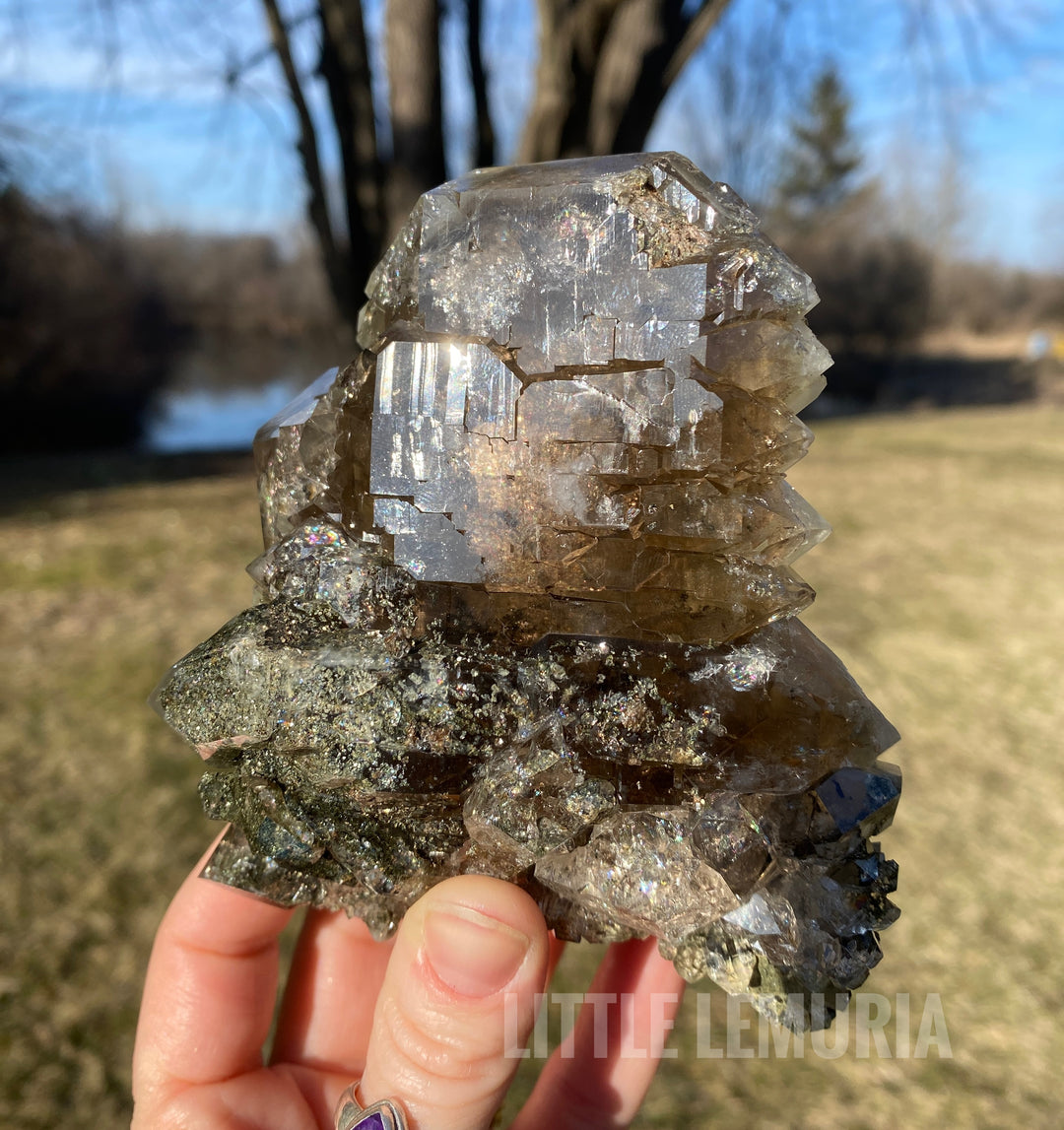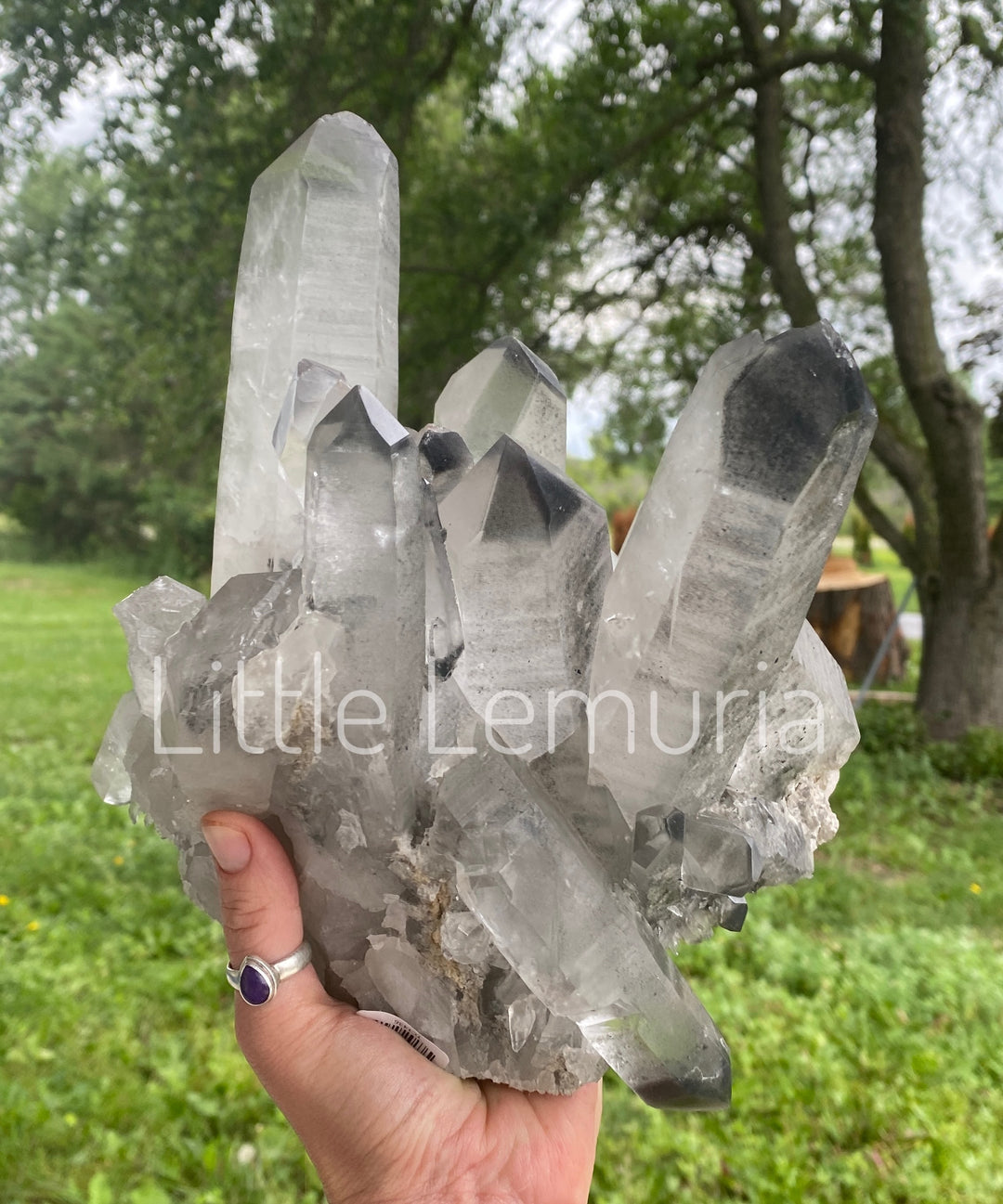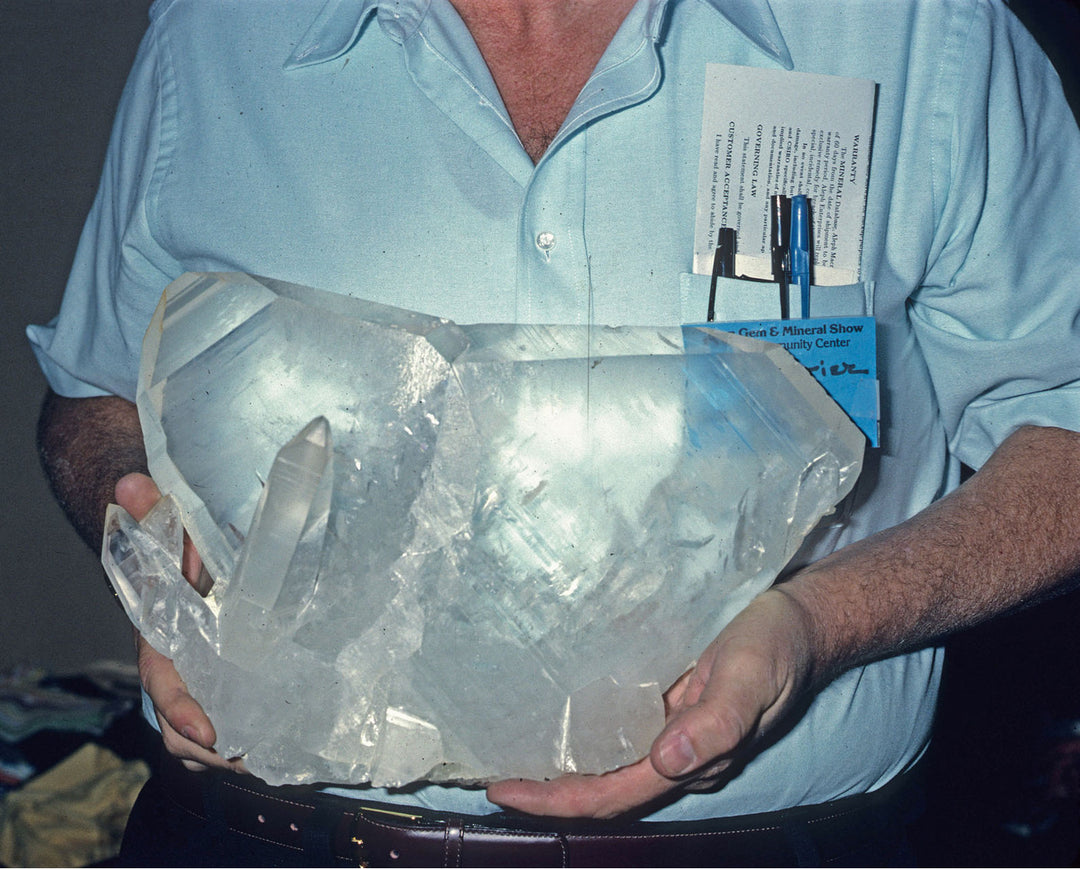Common Treatments Used to Enhance, Repair, and Alter Gems, Crystals and Minerals
Faked, enhanced, lab grown, reclaimed, and dyed are just a few manipulations of natural stones we see often in world of crystals and minerals. Not all of these are bad to all people, but some of these are down right unforgivable. The difference between accepted enhancements and unforgivable is often how the stone is presented. Collectors deserve the opportunity to make informed decisions on their purchases and if a stone has been manipulated, I want to know. Selling it as natural is fraudulent but sadly not all sellers are able to see subtle signs and scams continue unknowingly on down the supply chain to the customer.
Choosing which treatments to talk about in just this one blog presents its own set of challenges! Unfortunately, there are a lot to cover. I will not be talking about aura coatings in this blog. You can find my post from November 2018 on aura coating here. In addition to this, I have a previous blog on the classic Blue Calcite sold as Celestine scam. This blog has helpful tips on spotting the differences.
Back to business. What I do want to speak about today is the vast world of treatments commonly seen in the industry. In the world of gemstones, heat treatments are common and acceptable enhancements used on stones such as Tanzanite, Topaz, Aquamarine, Citrine, and many others. However, unlike in the crystal and mineral business, gem sellers are required by law to disclose the treatment and a certified stone that has been inspected and appraised will travel with a certificate of authenticity declaring any treatment or lack thereof. Added into the mix of complications is that some treatments are permanent, and others are temporary which further muddies the waters for consumers to navigate. The Federal Trade Commission has an established set of guidelines. Its easy to see this is ever so carefully handled in the gem world.
I will be listing some treatments below. This information is not presented with any bias, I think there is a place for some treatments provided they are sold with full disclosure.
High Pressure/High Heat- This type of treatment is so powerful it can alter the atomic structure of a diamond! This is used to alter the color of the stone to be more appealing and can take the muddy brown out of a gem and turn it to nearly water clear. Also called HPHT, this treatment can weaken the stones durability, its almost impossible to detect the treatment, but it is not seen in our crystal and mineral trade. Rubies can undergo a very specific treatment where the stone is heated up nearly to its melting point to dissolve away inclusions that affect the clarity of the stone. Even asterism (think star rose quartz, sapphire, etc) can be improved by heating.
Irradiation- This is important because it is used commonly in the crystal and mineral trade and often not disclosed to buyers or resellers (as Doug has experienced first-hand). Just like the name implies, irradiation is the process of exposing a stone to an unnatural source of radiation to change its color. It can be used in combination with heat to get the desired result. Quartz, for example, is naturally colored in the earth by cosmic radiation and heat. This creates color centers and gives us Amethyst, Smoky quartz, and Citrine. A color center develops in a crystal through a defect in the crystals structure. Heat excites electrons and they break free and start the color party. In a laboratory setting the stone is bombarded with radiation forcing a similar process to occur. Some of these color centers are stable, others are not which leaves them susceptible to fading in UV (sun)light. There are many more details I am leaving out of this process but there is a lot to cover!

Stabilization- This is one of the most necessary treatments I know of. In the processes of stabilization, a resin or adhesive is introduced into porous minerals. The color is not changed, but the durability of the stone is greatly enhanced. Without stabilization there would be truly little turquoise jewelry and virtually zero Ammolites intact. Once a stone is stabilized it can be cut and polished as usual and is exceedingly difficult to detect even by a laboratory (the stone would need to be destroyed to detect).

Fracture Filing- This can be done with glass, resin, or oil both colorless and colored. This is a sneaky little practice that enhances the clarity of the stone and hides any fractures from the inside out. The best way to understand this would be to take a stone that is damaged. Find a stone that has the dreaded white spot from being banged against another stone. Now take a dot of oil on your finger, baby oil will do, and touch the spot. Voila! Its fixed. This method is applied even to big problems like large cracks in expensive specimens. It is difficult to detect if this has been done. If the method has been applied skillfully it would go unnoticed.

Acid cleaning vs. Acid etching- Acid cleaning is a process widely used and accepted to remove oxides from the surface of a mineral to reveal the natural beauty underneath. A household example would be using Iron-Out to take rust stains out of a porcelain sink. You did not alter the sink, rather took away the extra minerals impeding its beauty. Acid etching modifies the surface of a crystal and enhances luster by artificial means. This can certainly apply to specimens. A layer of crystal is being dissolved to make the crystal appear to be higher quality than it was before it was acid etched.
Laser Drilling- Believe it or not if a stone (quartz all the way up to expensive diamond) has an inclusion that impedes the clarity a micro hole can be made with a laser to remove the inclusion. The hole is then filled with a special glass and the alteration is invisible to the naked eye. Similar techniques are used to create fake fluid inclusions and to rehydrate otherwise dried up fluid inclusions. All the fractures are filled with resin after the fluid inclusion is rehydrated and it can be sold for a much greater profit.

Lab grown Quartz and Overgrowth- Remember those little hairy green “chlorite” quartz clusters that made an appearance a few years back? Broken quartz clusters can be “healed” with synthetic hydrothermal quartz. Believe it or not even synthetically grown Japan-Law twins can be intentionally produced!

Smelt Quartz- This one is not actually quartz at all. This is simply glass with some element added such as cobalt, cinnabar, or chromium to give a touch of color. This stuff is everywhere but I think people are aware it is not natural or even crystal for that matter.

Reconstituted- This involves taking the powder or lapidary waste from a mineral, combining with a stabilizer, and creating a stone from dust. This is seen in Lapis, opals surrounded by matrix, and I’m sure many other stones. Another method is puzzling a stone together by using small pieces of the stone to make one large piece. This most seen in malachite both specimens and polished.

This is not an extensive list, but it does cover most common treatments that I am aware of in the crystal and mineral trade. This blog will be followed up with a second instalment about specific mineral species that are faked and manipulated. A few examples of stones we will cover in the next blog include:
Chrysanthemum stone, Malachite, Amber, Tiffany Stone, Moonstone, Blue Smoke, Blue Tara, Moldavite, Chlorite Phantom Quartz, Citrine, Nuummite, Andara, Citrine, and of course there will be several others! Whatever you do, look at everything as a learning experience. Its pretty amazing how man has learned these techniques but its disheartening to see them used maliciously. Together we can work to build a community of knowledgeable buyers and sellers with integrity so we can enjoy this passion for mineral collecting with confidence.
*All photos are used for education and not for profit. Please email for credit. Most photos were available through multiple sources and used under creative common license.






